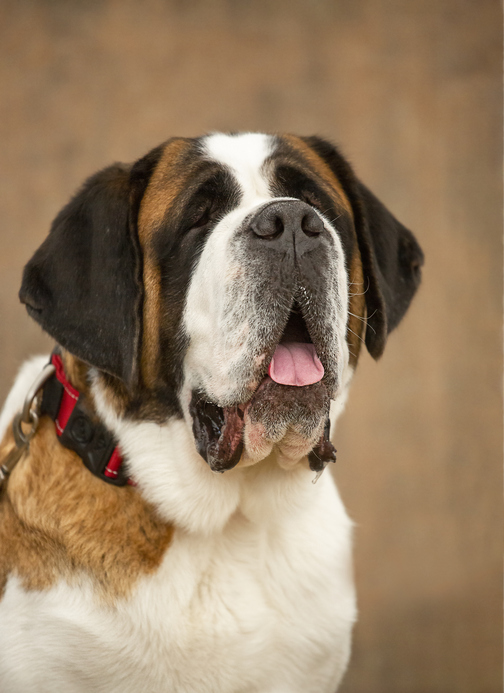If you’re on the hunt for a one-of-a-kind furry companion, let me introduce you to a hybrid that’s stealing hearts left and right: the Saint Bernard Australian Shepherd Mix. Hybrid dog breeds are all the rage these days, and it’s no surprise why. These designer dogs combine the best traits of two purebreds, creating pups with unique looks, personalities, and quirks. People are loving the idea of getting a dog that’s a little bit of this and a little bit of that, and the Saint Bernard Australian Shepherd Mix is a perfect example of why hybrids are so special.
So, what exactly is this mix? Picture the gentle giant vibes of a Saint Bernard paired with the high-energy, whip-smart nature of an Australian Shepherd. The result is a dog that’s as lovable as it is striking. In this article, we’re diving deep into everything you need to know about this hybrid—its characteristics, care needs, and whether it might be the right fit for your lifestyle. Whether you’re already smitten or just curious, stick with me as we explore the world of the Saint Bernard Australian Shepherd cross.
Understanding the Saint Bernard Australian Shepherd Mix Breed
Let’s start by getting to know the roots of this awesome hybrid. The Saint Bernard is a massive, fluffy breed known for its history as a rescue dog in the Swiss Alps. These dogs are the epitome of gentle giants—calm, patient, and incredibly loyal. On the other hand, the Australian Shepherd is a medium-sized herding dog from the U.S. (despite the name!). Aussies are bursting with energy, intelligence, and a strong work ethic. When you mix these two, you get a Saint Bernard Australian Shepherd Mix that’s a fascinating blend of size, smarts, and sweetness.
Physically, this hybrid can vary quite a bit depending on which parent’s genes dominate. You might see a dog that leans toward the Saint Bernard’s large, stocky build—think 70 to 120 pounds and a height of 25 to 30 inches at the shoulder. Or, it could take after the Aussie with a slightly leaner, more athletic frame. Their coat is often a mix of the Saint Bernard’s thick, fluffy fur and the Aussie’s medium-length, wavy coat, coming in colors like black, white, brown, or the merle pattern typical of Australian Shepherds. One thing’s for sure: this mix is a head-turner!
When it comes to temperament, the Saint Bernard Australian Shepherd hybrid often strikes a balance between the Saint Bernard’s laid-back nature and the Aussie’s high-energy personality. These dogs are usually friendly, protective, and super intelligent. They love being around their people and can be great with kids if socialized early. But heads up—they might inherit the Aussie’s herding instincts, so don’t be surprised if they try to “herd” you or other pets around the house!
Caring for Your Saint Bernard Australian Shepherd Mix
Alright, let’s talk about keeping your Saint Bernard Australian Shepherd Mix happy and healthy. First up: grooming. With a mix of the Saint Bernard’s dense fur and the Aussie’s shedding tendencies, you’re in for some regular brushing—probably a few times a week. This helps keep their coat tangle-free and reduces the amount of fur tumbleweeds rolling around your house. Bathing can be done as needed, but don’t overdo it since too many baths can strip their natural oils. And don’t forget those ears and teeth—regular cleaning prevents infections and dental issues.
Now, let’s chat about exercise. This hybrid is not a couch potato, my friend. Thanks to the Australian Shepherd side, they’ve got energy to burn. Aim for at least 60 to 90 minutes of activity daily. Think long walks, hikes, or even some backyard agility games. Mental stimulation is just as important, so puzzle toys or training sessions can keep their sharp minds engaged. If they don’t get enough exercise, you might end up with a bored pup who chews on your favorite shoes or digs up the yard.
Diet-wise, a Saint Bernard Australian Shepherd cross needs high-quality dog food tailored to their size, age, and activity level. Since they can be on the larger side, watch their portions to avoid obesity, which can strain their joints. Some owners opt for a mix of dry kibble and wet food, or even raw diets, but always consult your vet to figure out what’s best. Keep fresh water available at all times, especially after those long play sessions. With the right care, this mix will thrive and be your loyal buddy for years.
Training and Socialization of a Saint Bernard Australian Shepherd Mix
Training a Saint Bernard Australian Shepherd Mix can be both a joy and a challenge. These dogs are super smart, thanks to the Aussie genes, but they can also inherit a bit of stubbornness from either parent. Start training early—puppyhood is the best time to lay down the ground rules. Use positive reinforcement like treats, praise, and playtime to motivate them. Harsh methods just don’t work with this sensitive yet strong-willed mix.
Socialization is another biggie. Expose your Saint Bernard Australian Shepherd dog to different people, pets, and environments from a young age. This helps them grow into a confident, well-mannered adult. Take them to dog parks, invite friends over, or enroll them in puppy classes. The goal is to prevent shyness or overprotectiveness, which can sometimes pop up in larger breeds like the Saint Bernard.
Behavioral challenges? Yeah, they can happen. This mix might try to herd smaller animals or even kids due to their Aussie instincts. They could also develop separation anxiety if left alone too long since they’re so attached to their humans. If you notice these issues, redirect their energy with toys or training, and consider crate training for when you’re not home. Patience and consistency are key—trust me, they’ll get there with your guidance.
Health Considerations for the Saint Bernard Australian Shepherd Hybrid
Like any hybrid, the Saint Bernard Australian Shepherd Mix can inherit health issues from either parent breed. From the Saint Bernard side, watch out for hip dysplasia, elbow dysplasia, and bloat—a serious condition where the stomach twists. Australian Shepherds can pass down concerns like cataracts, epilepsy, and certain genetic eye conditions. Not every dog will face these issues, but it’s good to be aware so you can catch problems early.
Regular vet checkups are a must for your Saint Bernard Australian Shepherd hybrid. Schedule annual visits (or more often for puppies and seniors) to monitor their health. Keep up with vaccinations, flea and tick prevention, and heartworm meds. If your pup seems off—maybe they’re limping or less energetic—don’t wait to get them checked out. Early detection can make a huge difference.
To promote a long, healthy life, focus on prevention. A balanced diet, regular exercise, and maintaining a healthy weight go a long way. Avoid overfeeding, as extra pounds can stress their joints, especially since this mix can be prone to hip issues. Also, keep their mind active with training and play—mental health matters just as much as physical health. With love and care, your Saint Bernard Australian Shepherd Mix can live a full, happy life, often between 10 to 14 years.
Is a Saint Bernard Australian Shepherd Mix Right for You?
So, you’re thinking about bringing a Saint Bernard Australian Shepherd Mix into your life. Awesome! But let’s make sure this hybrid fits your lifestyle. First, consider your living space. This is a large, active dog, so a small apartment might not be ideal unless you’re committed to daily outdoor adventures. A house with a fenced yard is perfect, giving them room to roam and play. They can adapt to different climates, but their thick coat means they might overheat in super hot areas—provide shade and water if you’re in a warm region.
How about family dynamics? The Saint Bernard Australian Shepherd cross is often great with kids, thanks to the Saint Bernard’s gentle nature. However, their size and energy (especially from the Aussie side) mean they could accidentally knock over little ones during play. Supervision is key, and teaching kids how to interact with dogs is a must. They can also get along with other pets if socialized early, though their herding instincts might kick in around smaller animals.
Before adopting or purchasing this mix, think about a few key factors. Do you have the time and energy to meet their exercise needs? Are you prepared for grooming and potential shedding? And can you handle the financial responsibility of vet care, food, and supplies for a larger dog? If you’re nodding yes, then a Saint Bernard Australian Shepherd Mix could be your perfect match. Just be ready for a loyal, loving companion who’ll keep you on your toes.
Conclusion: Embracing the Saint Bernard Australian Shepherd Mix
To wrap things up, the Saint Bernard Australian Shepherd Mix is truly a one-of-a-kind hybrid. They bring together the best of two amazing breeds— the Saint Bernard’s calm, protective nature and the Australian Shepherd’s intelligence and zest for life. But with that uniqueness comes responsibility. They need regular exercise, grooming, training, and lots of love to thrive. Their health needs some attention too, so staying on top of vet visits is crucial.
If you’re considering this mix, do your homework. Research breeders or look into rescues to find a pup that’s the right fit for you. Prepare your home and heart for the commitment of owning a large, energetic dog. Trust me, the effort is worth it. There’s nothing quite like the joy of welcoming a Saint Bernard Australian Shepherd hybrid into your family—they’ll fill your days with laughter, cuddles, and maybe a little bit of chaos. So, are you ready to take the leap? I bet this lovable mix is just waiting to steal your heart!

